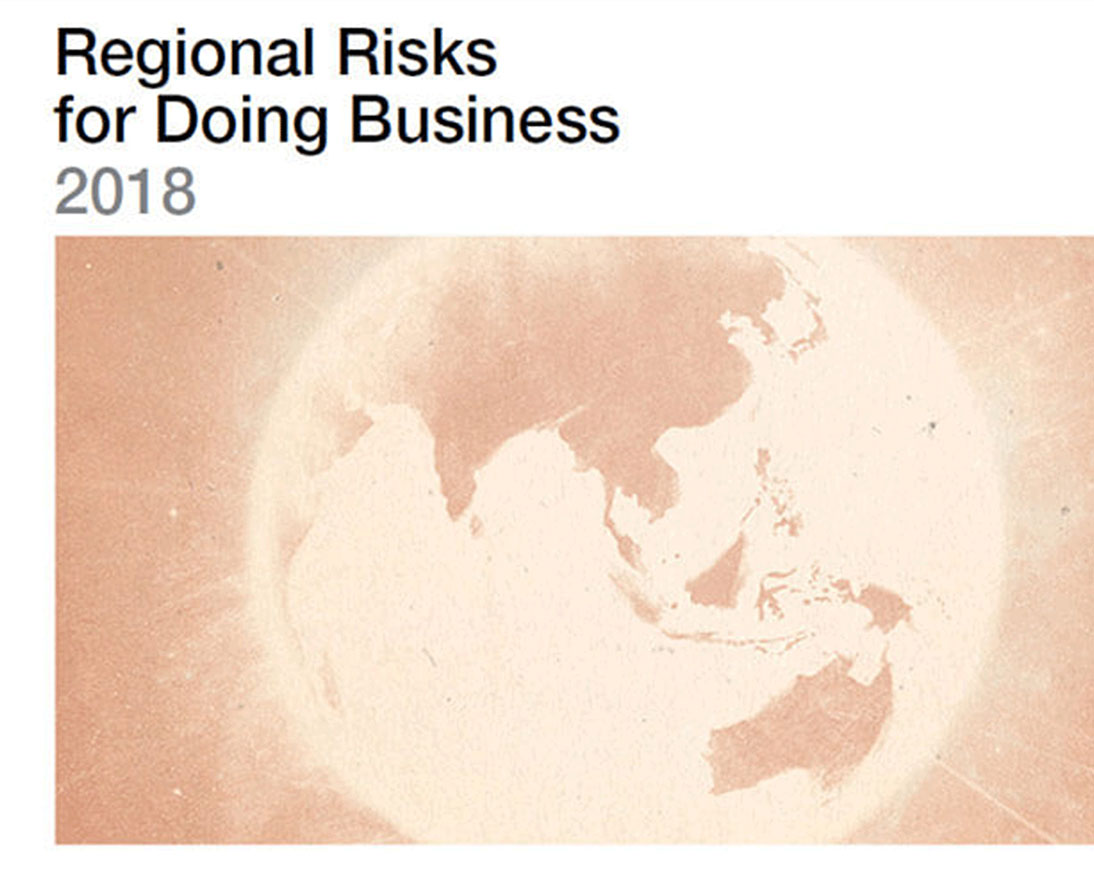Top risks for doing business in North America
Global risksArticleNovember 12, 20184 min read
Americans and Canadians agree that cyber-attacks are the top threat of doing business but disagree on the threat of terrorism
As Facebook became the latest on a growing list of major data breach victims in September 2018, a new report by the World Economic Forum in collaboration with Zurich Insurance compiled from surveys with executives shows that cyber-attacks have become the number one concern for businesses in the U.S. and Canada, coming in ahead of data fraud or theft and extreme weather events.
The Regional Risks for Doing Business Report 2018 notes that the last year marked a highpoint for cyber-attacks with The WannaCry ransomware attack, affecting 300,000 machines across 150 countries, or the NotPetya malware attack, which caused hundreds of millions of dollars in damages to major corporations like Merck, FedEx and Maersk.
Increasingly common news headlines often highlight the staggering costs of hacks, meaning executives are very much aware of the potential for fraud and thefts to cost them millions. Additionally, corporate reputations are at risk as recent legislation changes in certain regions now require companies to report breaches to the public.
The report notes that 87 percent of businesses in Canada fell victim to a successful breach in 2017. However, businesses aren’t the only ones impacted – incredibly, 65 percent of the U.S. population has experienced a personal data breach, including during the Equifax breach, costing an estimated $600 million and affecting over 143 million consumers, according to the report.
Extreme weather was the third highest ranked business risk in the region, a ranking mainly driven by Canadian executives, who also added the failure of climate change mitigation and adaption in their list of top ten risks. Natural disasters have been particularly devastating for the country in the past couple of months as several wild fires and extreme heat caused major human and environmental devastation.
The U.S. is not immune from those risks as the succession of major hurricanes and equally devastating wildfires has shown. Hurricane Harvey violently shocked parts of Texas, leaving $125 billion worth of damages in its wake. Hurricanes Irma and Florence followed suit, causing similar levels of damages to Puerto Rico and the Carolinas respectively, while California faced some of the most intense wildfires in its history.
Executives in Canada and the U.S. have differing priorities and concerns – terrorist attacks and issues of physical security were ranked as the second highest risk for U.S. businesses, possibly due to a wider sense of insecurity related to gun violence. Weapons of mass destruction (WMDs) was ranked as the fifth biggest risk for U.S. businesses, though neither terrorism nor WMDs featured in the top ten for Canadian firms.
Fiscal crises and energy price shocks finished off the list of top five North American business risks. The report notes that fiscal crises did not make the top ten of U.S. business risks in last year’s report, but jumped to the fourth highest risk this year, partly stemming from concerns of fiscal deficits and public debt that have emerged following the U.S. tax cuts of February 2018.
The picture painted by the latest list of business risks points to a turbulent year for North American businesses, and by all indications, these risks will only increase with the improved capabilities of hackers and the intensification of climate change. However just as the sophistication and tools used by hackers increase and weather patterns intensifies, so does our ability to monitor bad actors, predict threats and protect our businesses. Now more than ever, it is crucial for U.S. and Canadian businesses to take a proactive rather than reactive approach to these risks.







